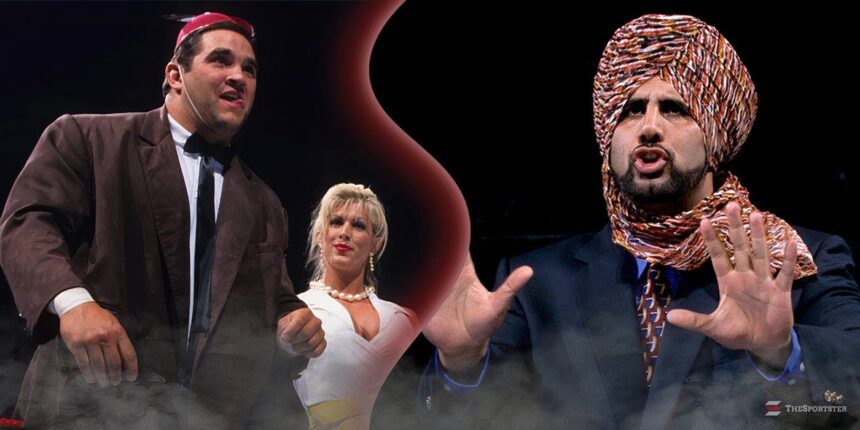The Attitude Era marked a period of tremendous success for WWE, solidifying its status as the premier wrestling promotion amid intense rivalry with WCW. Despite skyrocketing ratings and the rise of major stars, many flaws persisted in the product. While several wrestlers gained immense popularity, others struggled, largely due to their character gimmicks. WWE experimented widely during this era, leading to both notable successes and numerous failed personas.
Among these was Brax, a German bodybuilder who debuted on TV in March 1998. Although visually appealing, Brax lacked in-ring talent and was initially sent to ECW for seasoning. His debut went largely unnoticed, and after an early tournament loss in July 1998, he quietly left the company.
The Truth Commission, another faction introduced in 1997, featured members like Kurrgan and Bull Buchanan but failed to connect with the audience. Later led by Jackyl (Don Charis), the group remained overshadowed by more prominent factions such as D-Generation X and the Nation of Domination, fading into the background despite feuds with Los Boricuas and DOA.
Sean Stasiak’s first WWE stint saw him adopt the gimmick of “Meat,” portrayed as a love interest to a group of provocative sisters including Terri Runnels. This persona hindered his progress, and after shedding the gimmick, he competed under his real name before leaving WWE in December 1999.
In 1997, Crush formed the Disciples of Apocalypse, a biker gang faction that played a key role in the “gang war” storyline against the Nation of Domination and the Truth Commission. Despite attempts to revive the group post-Crush’s departure—who left due to the Montreal Screwjob—the faction never regained momentum on WWE TV.
Dennis Knight’s final WWE character was “Naked Mideon,” which emerged from off-screen antics and featured him wearing only a thong and fanny pack. Although absurd and short-lived, the gimmick stands out as a unique footnote in his career, which ended with his release in early 2001.
Bart Gunn and Bob Holly were repackaged as “Bold Bob” and “Bodacious Bart,” forming the New Midnight Express managed by Jim Cornette during the failed 1998 NWA invasion storyline. Though talented, the duo never captured fans’ imaginations, leaving their run largely forgotten.
Tiger Ali Singh, son of Tiger Jeet Singh, debuted in 1997 with high expectations but soon became a forgettable figure, often featuring in less prominent shows and performing humiliating segments that failed to connect with audiences.
Jackyl later assembled “The Oddities,” a faction of unusual and large personalities including John Tenta (Golga), Kurrgan, Luna Vachon, and George “The Animal” Steele. While the group had potential for undercard entertainment, they lacked long-term viability and disbanded with members fading into obscurity.
Stephen Regal made his WWE debut in June 1998 with the “Real Man’s Man” gimmick—a lumberjack character that did not suit his skills and lasted only a few months. After departing WWE in early 1999 for rehab, Regal returned in 2000 to find greater success.
Beaver Cleavage, played by Headbanger Mosh after his partner’s injury, was a controversial character with suggestive vignettes implying an inappropriate relationship with his mother. The gimmick was short-lived and poorly received, epitomizing some of the era’s more bizarre creative choices.
Fan Take: This glimpse into WWE’s Attitude Era showcases the risky and experimental nature behind some of its most memorable—and forgettable—characters. For fans and historians, understanding these attempts provides insight into how WWE wrestled with creativity and audience engagement, shaping the future of professional wrestling entertainment.













